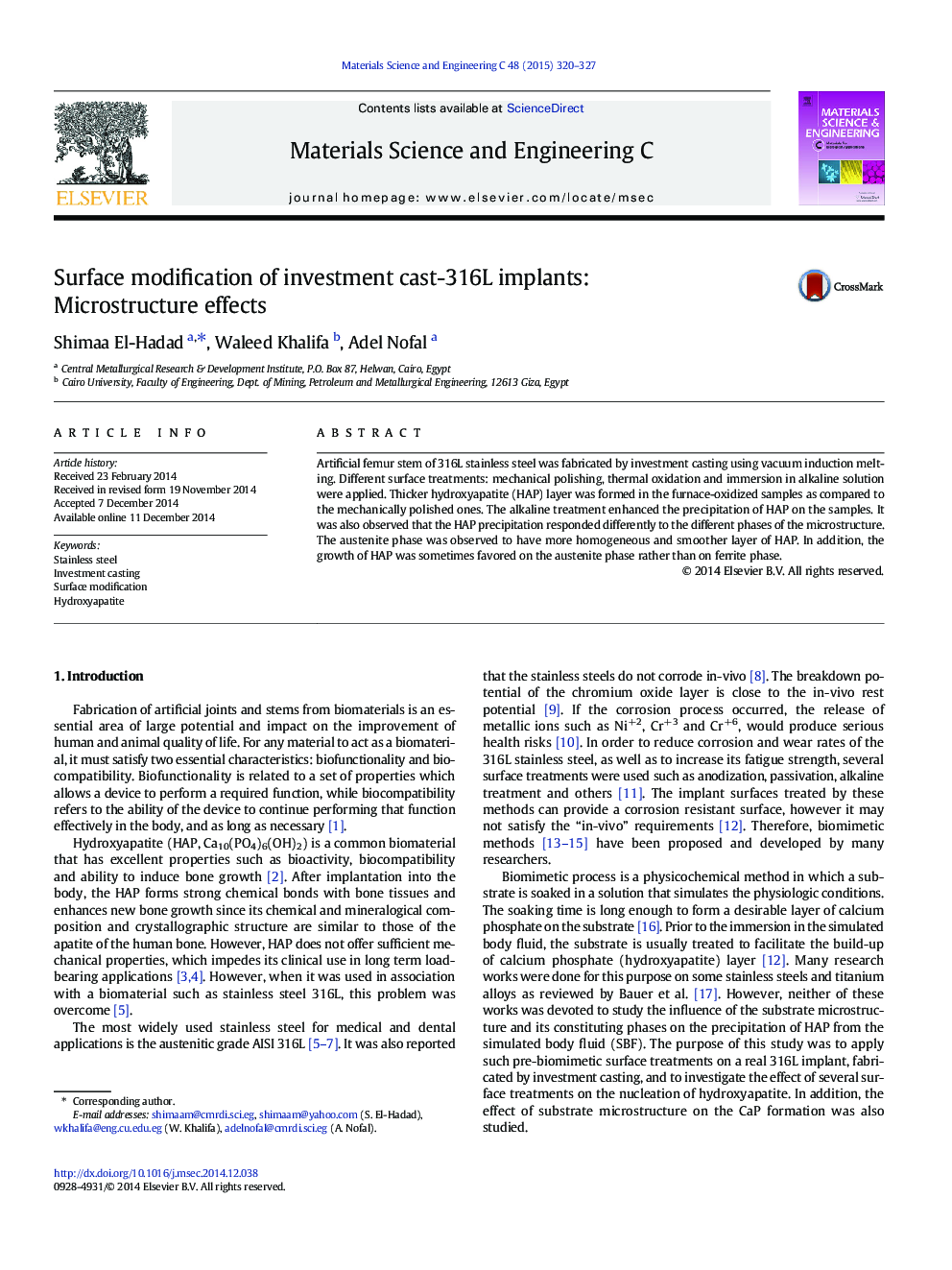| Article ID | Journal | Published Year | Pages | File Type |
|---|---|---|---|---|
| 1428463 | Materials Science and Engineering: C | 2015 | 8 Pages |
•Implant (stems) produced by investment casting.•Different surface treatments were applied.•Formation of hydroxy-apatite was investigated.•The growth of hydroxy-apatite and its distribution showed different trends on the different phases (austenite & ferrite).•The more was the austenite phase the more homogeneous and smoother layer of HAP could be obtained.
Artificial femur stem of 316L stainless steel was fabricated by investment casting using vacuum induction melting. Different surface treatments: mechanical polishing, thermal oxidation and immersion in alkaline solution were applied. Thicker hydroxyapatite (HAP) layer was formed in the furnace-oxidized samples as compared to the mechanically polished ones. The alkaline treatment enhanced the precipitation of HAP on the samples. It was also observed that the HAP precipitation responded differently to the different phases of the microstructure. The austenite phase was observed to have more homogeneous and smoother layer of HAP. In addition, the growth of HAP was sometimes favored on the austenite phase rather than on ferrite phase.
Graphical abstractFigure optionsDownload full-size imageDownload as PowerPoint slide
